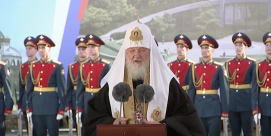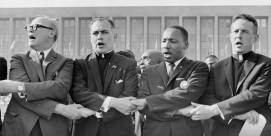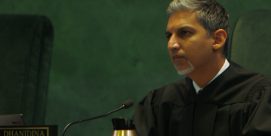Is Pope Francis going to solve the abuse crisis?
By Mark Silk, Contributing Editor, RNS
Since taking office five years ago, Pope Francis has carried the torch for progressive Catholic reform. His modest lifestyle and commitment to “a poor Church for the poor,” his emphasis on mercy, and his attacks on clericalism, have set him at odds with the doctrinaire and the traditionalist. By opening the door to Communion for the divorced and remarried, by speaking more about immigrants and climate change than abortion, he has revivified the spirit of the Second Vatican Council, which brought the Church into the modern world in the 1960s.
But in confronting the biggest challenge to the Church’s credibility since the Reformation, the sexual abuse crisis, Francis stumbled badly. Indeed, he seemed for a while to be retreating from the relatively tough approach of his immediate predecessor, Benedict XVI.
Benedict inherited a mess from the too suddenly sainted John Paul II, on whose watch the crisis got under way in the 1980s. John Paul made cardinals of prelates credibly charged with abuse, like Archbishop Keith O’Brien of Edinburgh and Theodore McCarrick of Washington, and he seemed to go out of his way to show favor to the publicly disgraced.
After Cardinal Bernard Law resigned as archbishop of Boston in the face of revelations that he had been covering up abuse cases for years, John Paul appointed him to the position of archpriest of the basilica of Santa Maria Maggiore in Rome. Nor did he cease supporting Marcial Maciel Degollado, founder of the Legion of Christ, despite ample evidence that Maciel was a monster who had abused a long series of young legionaries.
John Paul did put responsibility for judging and defrocking priests accused of abuse in the hands of Cardinal Joseph Ratzinger, his chief theological enforcer as head of the Congregation for the Doctrine of the Faith (CDF). And when Ratzinger became Benedict, he forced Maciel into retirement and instituted a zero tolerance policy for abusers. He also made a practice of meeting with abuse victims on his trips abroad.
What Benedict did not do, however, was confront the central issue of the crisis—the covering up and thus the perpetuation of abuse by church leaders. For those with eyes to see, it was evident that unless the Vatican made clear by word and disciplinary action and judicatory process that this would not be tolerated, the crisis would continue.
The next pontificate got off to a promising start in this regard. In his first year in office, Francis created a Commission for the Protection of Minors, and put in charge Cardinal Sean O’Malley of Boston, one of his trusted eight cardinal advisors, whose record of addressing abuse was without peer among high Catholic prelates.
In 2015, Francis accepted the resignations of Bishop Robert Finn of Kansas City-St. Joseph and John Nienstedt of St. Paul and Minneapolis, both of whom were found to have covered up abuse. The same year, he approved the Commission’s recommendation that a tribunal be established to hold negligent bishops accountable.
But also in 2015 these positive moves were undermined by Francis’ appointment of Juan Barros Madrid as bishop of the Diocese of Osorno in southern Chile. Barros had been widely condemned in the country as one of a number of Chilean Church officials who protected Fernando Karadima, a charismatic priest whom the CDF found guilty of child abuse in 2011. Indeed, members of the Chilean hierarchy urged against Barros’ appointment.
Over the next couple of years, the Vatican effort to solve the crisis hit a wall. The CDF found unspecified “legal” difficulties with the proposed tribunal and so it was never implemented. The two abuse victims on the Commission resigned in frustration.
Citing “lack of resources, inadequate structures around support staff, slowness of forward movement and cultural resistance,” one of the two, Marie Collins, wrote in March of last year, “The most significant problem has been reluctance of some members of the Vatican Curia to implement the recommendations of the Commission despite their approval by the pope.”
Then, last January, Francis went to Chile. While apologizing for the behavior of abusive priests, he drew sharp criticism for appearing publicly with Barros. On the plane ride home, he went so far as to call the accusations against the bishop “calumny.”
“I cannot condemn him, I have no evidence, and I am convinced that he is innocent,” Francis told reporters.
But rather than dig in his heels, the pope responded to the ensuing outrage by ordering up an investigation from Archbishop of Malta Charles Scicluna, the long-time Vatican judicial official who had earned his spurs by getting the goods on Maciel. Scicluna returned in April with a 2,300-page report that provided all the evidence Francis needed to remove Barros—and to recognize that he had been given bad advice on the case, presumably by his old friend on the council of cardinal advisors, retired Archbishop of Santiago Francisco Javier Errázuriz.
“I have made serious mistakes in the assessment and my perception of the situation, especially due to a lack of truthful and balanced information.” Francis wrote in a letter to the Chilean bishops. He proceeded to meet with a number of Karadima’s victims, reportedly telling them, “I was part of the problem, I caused this and I apologize to you.”
If any pope in history has ever made such an admission of error, I’m not aware of it.
What followed was a three-day emergency summit in May with all of the Chilean bishops, at the end of which they en masse offered to resign. Thus far, Francis has accepted the resignations of five of them, including Barros. To Chilean Catholics he wrote a letter decrying their Church’s “culture of abuse and cover-up.”
To complete the object lesson, more housecleaning will have to be done at the top. The 84-year-old Errázuriz must be taken off the cardinals council, as must Cardinal George Pell of Melbourne, now facing criminal trial in Australia on multiple abuse charges. Archbishop Philip Wilson of Adelaide, convicted of covering up abuse earlier this month, has to be removed from office, and so, in all likelihood, should an Indian bishop credibly charged with raping a nun.
But most importantly, a regular judicial process needs to be put in place to deal with bishops accused both of abuse and of covering up or otherwise mishandling abuse cases. On July 24, Cardinal O’Malley himself issued a statement calling on the Vatican to create “clearer procedures for cases involving bishops.”
Along with the papally approved but unborn tribunal for assuming this responsibility, there has been talk over the past couple of years of moving abuse cases out of the CDF and speeding them up. In the curial reform that Francis has promised, why not a new office (“dicastry,” in Vatican-speak) dedicated to adjudicating the entirety of abuse cases?
The obvious person to take this on is Archbishop Scicluna. Make him a cardinal and give him the job of drafting the procedures, hiring the personnel, and running the show. There’s no better way for Francis to demonstrate that he’s serious about exorcising the culture of abuse and cover-up. There’s no other way for the Church to put the abuse scandal behind it.
Mark Silk is Professor of Religion in Public Life at Trinity College and director of the college’s Leonard E. Greenberg Center for the Study of Religion in Public Life. He is a Contributing Editor of the Religion News Service






